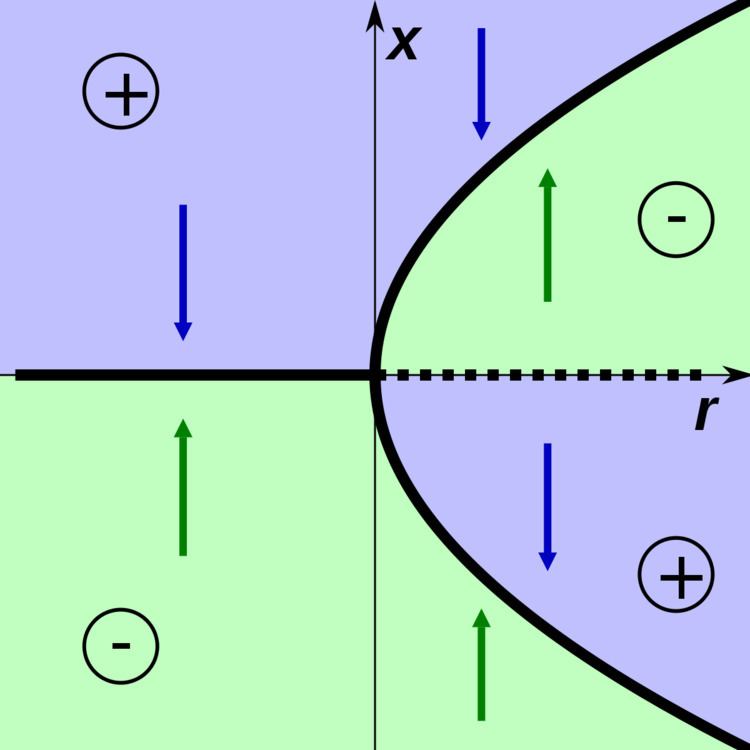 | ||
In bifurcation theory, a field within mathematics, a pitchfork bifurcation is a particular type of local bifurcation where the system transitions from one fixed point to three fixed points. Pitchfork bifurcations, like Hopf bifurcations have two types - supercritical or subcritical.
Contents
In continuous dynamical systems described by ODEs—i.e. flows—pitchfork bifurcations occur generically in systems with symmetry.
Supercritical case
The normal form of the supercritical pitchfork bifurcation is
For negative values of
Subcritical case
The normal form for the subcritical case is
In this case, for
Formal definition
An ODE
described by a one parameter function
has a pitchfork bifurcation at
Note that subcritical and supercritical describe the stability of the outer lines of the pitchfork (dashed or solid, respectively) and are not dependent on which direction the pitchfork faces. For example, the negative of the first ODE above,
